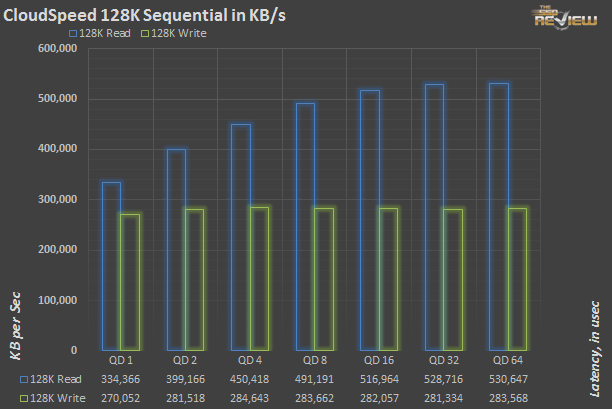MEASURING PERFORMANCE
To measure the most basic performance parameters, we first start with a secure erased drive. We write over the entire LBA space with sequential writes twice, then write the capacity of the drive twice with 4K random writes. Once prepared, we run the following tests for one minute at each queue depth. Then, we secure erase the drive and run the 4K read and write tests again to get a comparison between fresh and degraded performance states.
We’re showing throughput in KB/s instead of MB/s, but either way performance is just where you would expect it to be. Sequential writes top out at 283MB/s with random data, and reads are capped by the SATA III interface at 530MB/s. Naturally, easily compressible data writes would be closer to the read performance, near or above 500MB/s were it shown here.
4K reads scale evenly up to 32 outstanding commands. Latency is outstanding for a MLC-based SandForce drive, with QD 1 – 4 under 200 usec (or .2ms). SandForce random read performance can decline with write history, but even in a worn state the CloudSpeed offers over 52,000 IOPS.
Fresh out of the box, the CS500 pulls down 40,000 4K write IOPS, with similarly snappy latencies. Once the drive is full though, that number gets cut in half. The CloudSpeed is rated for 20,ooo 4K write IOPS, and it’s clear why that is from the second chart showing used state performance hovering around the 20,000 mark.
 The SSD Review The Worlds Dedicated SSD Education and Review Resource |
The SSD Review The Worlds Dedicated SSD Education and Review Resource | 

